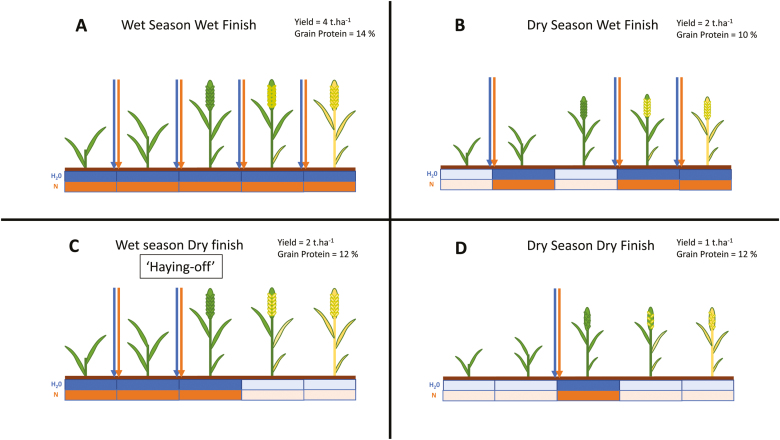Fig. 2.
The importance of timing N application with water availability in dryland agriculture. Five stages of cereal crop development are represented in each panel. Arrows represent rainfall events (blue) and N applications (orange). Soil water (blue) and N (orange) for each development stage are represented by boxes beneath each developmental stage, indicating high water or N (dark), or reduced water or N (light). Size of plants and number of grains on each spike represent actual biomass and grain production of plants in each situation. Relative grain yields and protein content are provided for each of the four growth seasons. (A) A season with regular rainfall events; (B) a season with few rainfall events during vegetative growth, but regular rainfall during reproductive growth; (C) a season with regular rainfall events during vegetative growth, but few rainfall events during reproductive growth; (D) a ‘drought’ season with few rainfall events.

